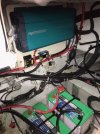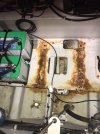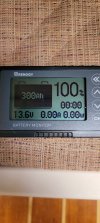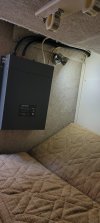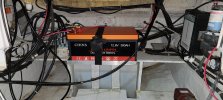The original generator on my 2003 330 Express went kaput this summer and rather than spend money trying to diagnose and fix, I've decided to replace it with an inverter/charger and battery bank. This is for running the microwave or coffee machine for a few minutes at sea, not for running anything high current like the air conditioning for any extended period of time. (In the past 6 years since buying the boat, I've only used the AC at sea once! It's just not much of an issue up here in New England).
Anyways I'm posting my plan for the install in case any others have contemplated doing something similar. Any feedback or critique is greatly welcome!
I'm using a Mastervolt Powercombi 2000w pure sine inverter / 100 amp charger, and will start with a bank of two 100ah AGM Group 31 batteries. I contemplated going Lithium, but I want to attach the aux battery isolator cables from my Yamaha 4.2L F250 outboards directly to the bank to keep it charged and feed more amperage to the inverter when in use, and I know that those isolators were not designed to be used with Lithium.
The other major consideration is installation location -- the bilge area is the obvious choice since there's plenty of space once the genny and fuel tank are removed, but I'm a bit worried that it's pretty wet there.
I'll be doing the work this winter, so still plenty of time for tweaking.
Thanks for any input and happy to take questions!
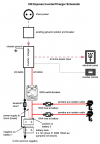
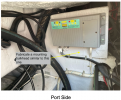
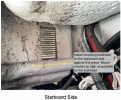
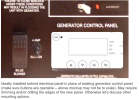
Anyways I'm posting my plan for the install in case any others have contemplated doing something similar. Any feedback or critique is greatly welcome!
I'm using a Mastervolt Powercombi 2000w pure sine inverter / 100 amp charger, and will start with a bank of two 100ah AGM Group 31 batteries. I contemplated going Lithium, but I want to attach the aux battery isolator cables from my Yamaha 4.2L F250 outboards directly to the bank to keep it charged and feed more amperage to the inverter when in use, and I know that those isolators were not designed to be used with Lithium.
The other major consideration is installation location -- the bilge area is the obvious choice since there's plenty of space once the genny and fuel tank are removed, but I'm a bit worried that it's pretty wet there.
I'll be doing the work this winter, so still plenty of time for tweaking.
Thanks for any input and happy to take questions!






